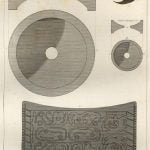
Games of various character have attracted the Indian tribes from the earliest notices we have of them. Some of these games are of a domestic character, or such as are usually played in the wigwam or domicile. Of this kind are the game of hunting the moccasin, the game of the bowl, and sundry minor games known to the Algonquins, the Cherokees, and other tribes. But by far the greater number of games practiced by the North American Indians are of an athletic character, and are designed to nourish and promote activity of limb, and manual expertness in the field, or on the green. Such are their various ball plays, and wrestling and running matches, which whole tribes are assembled to witness and participate in. To run swiftly; to fend adroitly with the baton; to strike or catch; to lift great weights; to throw stones; to shoot darts; to dance with spirit; and, in short, to exhibit any extraordinary feat of agility, strength, or endurance in mimic strife, has ever been held to be among the principal objects of applause, especially in the young. It is, indeed, in these sports that the elements of war are learned; and it is hence that excellence in these feats is universally held up to admiration in the oral recitals of the deeds of their heroes and prodigies. Manabozho excelled in his superhuman and god-like feats, and killed the mammoth serpent and bear-king. Papukewis could turn pirouettes until he raised a whirlwind, and Kwäsind could twist off the stoutest rope. These things are related to stimulate the physical powers of the young; and there is not a tribe in the land, whose customs we know, of whom it is not a striking trait to favor the acquisition of skill in games and amusements.
Among these field sports, the casting of stones is one of the most ready and natural traits of savage tribes. With such accuracy is this done, that it is astonishing with what skill and precision an Indian will hurl stones at any object.
The numerous discoidal stones that are found in the tumuli, and at the sites of ancient occupancy, in the Mississippi Valley, serve to denote that this amusement was practiced among the earlier tribes of that valley at the mound period. These antique quoits are made with great labor and skill, from very hard and heavy pieces of stone. They are, generally, exact disks, of a concave surface, with an orifice in the centre, and a broad rim. A specimen now before us, from one of the smaller tumuli at Grave Creek Mound, in the Ohio Valley, is wrought from a solid piece of porphyry. It is three and a half inches in diameter, with a thickness of one and five-tenths inches. The perforation is half an inch, and the rim, forming the disk, a small fraction under the same.
The object of hurling such an instrument was manifestly to cover an upright pin or peg driven into the ground. Whether, like the ancient Greeks, in hurling their discus a string was used to give additional velocity and direction to its motion, cannot be stated.
These ancient instruments are of various sizes, but all unite in the same principles of construction. One of the specimens observed at the same locality is one and four-tenths inches in diameter. The following sketch (Plate 23, Figures 1 and 2) is an accurate copy of the larger specimen we have described, of the exact size. Figures 3 and 4 represent the smaller ones, and it is supposed were made for children s use.
